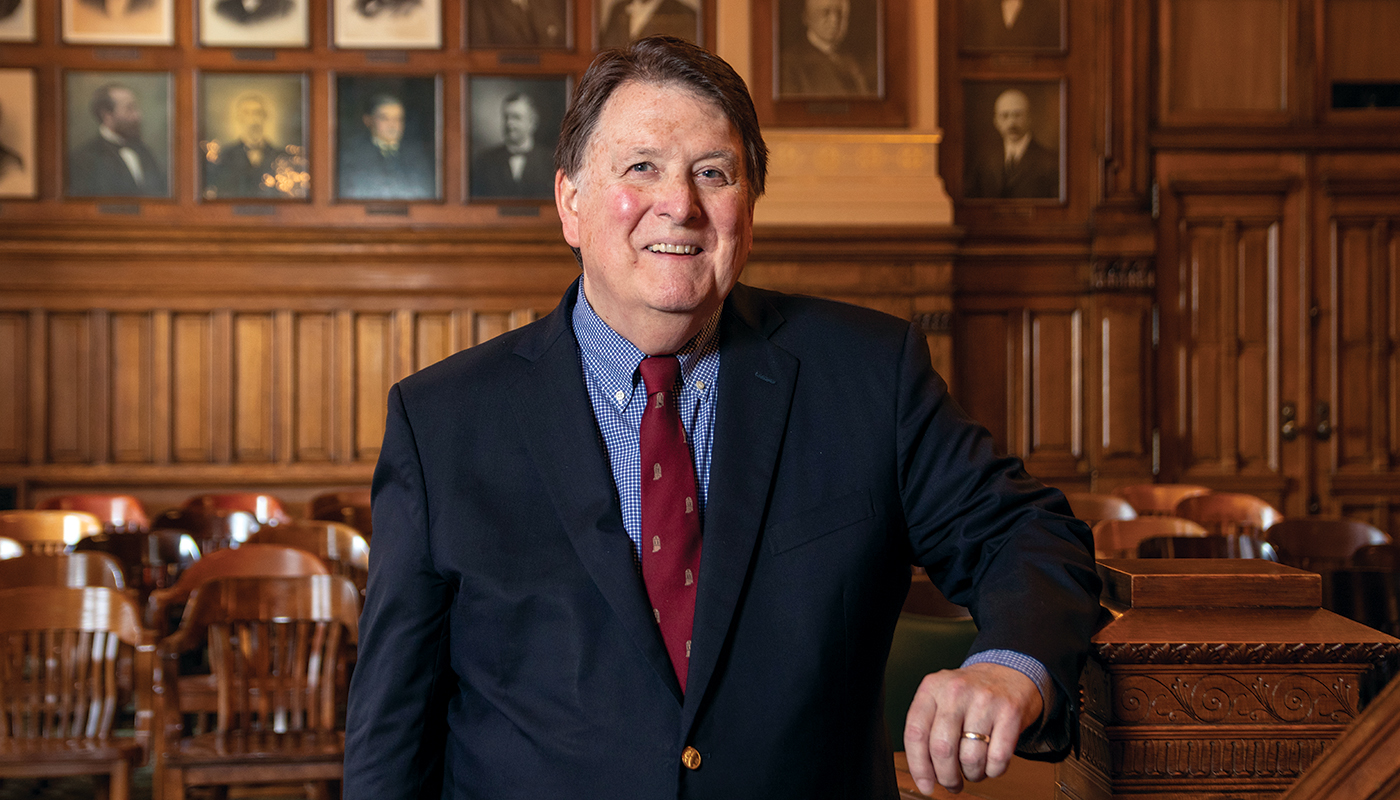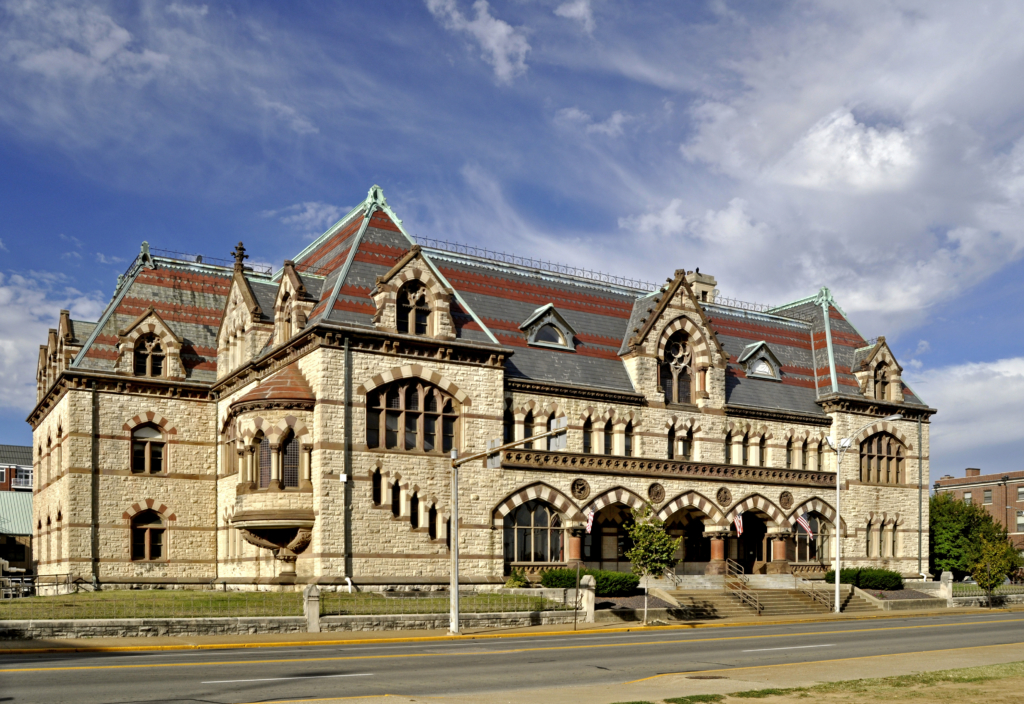NEWS
Randall Shepard Honored for Preservation Leadership
Recognizing his lifelong advocacy for historic places, the former chief justice of the Indiana Supreme Court wins Indiana Landmarks’ 2023 Williamson Prize for outstanding leadership in historic preservation.

Sound Judgment
In 1965, the Evansville Press highlighted the winner of its Teen-of-the-Year award, a promising young man who seemed destined for great things. After a career spanning more than 50 years, it’s safe to say that Randall Shepard exceeded expectations. Today, he can add one more laurel as winner of Indiana Landmarks’ Williamson Prize for Outstanding Preservation Leadership.
Though the Press article lists young Randy’s impressive list of accomplishments at Harrison High School—from leading the debate society to “stealing the show” at a school play—it doesn’t mention another important fact. At the same time he was editing the school paper and excelling in Eagle Scouts, Shepard was privately nurturing an appreciation for historic places, a personal passion that fueled a lifelong interest in historic preservation.
As executive assistant to Evansville Mayor Russell Lloyd in the 1970s, Shepard helped find people to staff the city’s first preservation commission. When the federal government prepared to move out of the city’s 1879 Post Office and Customs House, he convinced city officials to take title to the property.
He recognized the significance of the Gothic landmark designed by Architect of the Treasury William Appleton Potter, who also designed buildings at Princeton University, Shepard’s alma mater. “Even though we didn’t know our plans for it, we wanted to make sure the government didn’t sell the building to someone who wouldn’t do anything with it,” says Shepard. “I helped with the legal part of it and persuading people that it was important to Evansville.” Today the landmark thrives as a venue for offices and events.

. A former superior court judge and chief justice of the Indiana Supreme Court, Shepard has supported initiatives to restore judicial landmarks. In the ’70s, he helped convince Evansville city leaders to take title to and repurpose the 1879 Post Office and Customs House (above). Photo: Lee Lewellen
In 1979, the National Trust for Historic Preservation gave the City of Evansville its public service award for its significant investment in local landmarks, including the Old Post Office, at a ceremony Shepard attended with other Evansville leaders. He later served on the National Trust’s board of advisors and as a trustee, lending his expertise to preservation issues nationwide.
In 1985, he joined other local investors to help save the 1868 “Manor House,” a grand Italianate in the Riverside neighborhood that was crumbling from neglect. Shepard helped secure the federal rehabilitation tax credits used to transform the building into luxury apartments, the first such project in the city to use the incentive.
“I think there is broader interest today in the value of preservation among the general public, community and business leaders than there has been in the past,” notes Shepard. “People who aren’t ‘preservationists,’ stop to contemplate preservation as an option and that’s incredibly hopeful.”
As he rose to become Vanderburgh County Superior Court judge and ultimately chief justice of the Indiana Supreme Court, Shepard earned a reputation for championing judicial landmarks. In Evansville, he served as president of Conrad Baker Foundation, which led efforts to preserve the Old Vanderburgh County Courthouse and champion its reuse as offices and an events center. To honor his leadership, in 2011 the Evansville Bar Association renamed the building’s renovated Superior Courtroom the Randall T. Shepard Courtroom.
During his time on the Indiana Supreme Court, Shepard oversaw efforts to restore the historic splendor of the Supreme Court courtroom, robing room, and library at the Indiana Statehouse, supporting a project that restored the 1887 paint scheme and recreated historic lighting fixtures.
Shepard also chaired the state’s Courthouse Preservation Advisory Commission, which studied the condition of Indiana’s historic courthouses and offered preservation recommendations.
“Randy treats the smallest projects just as importantly as the largest and shows a particular interest in preservation efforts that bring less represented groups into the forefront,” says Tim Shelly, former Indiana Landmarks board member and past Williamson Prize winner.
Shepard joined Indiana Landmarks’ board of directors in the 1980s and served as chair in the 1990s, but we never really let him leave. Today he continues to lend his expertise as chairman emeritus.
Former Indiana Landmarks President Reid Williamson sought Shepard’s advice after a portion of the West Baden Springs Hotel collapsed in the 1990s on how the organization might legally intervene to help stabilize a building we didn’t own. “It was in the early stages, before we knew what would come next when the Cook family made the glorious decision to restore the hotel,” says Shepard.
“This award reconnects me to Reid Williamson, with whom I spent so much time, and whom I admired as one of the great national preservation leaders of the twentieth century,” says Shepard. “It tells me that I’ve made a difference in preservation, that this work has mattered and been worthwhile.”
Indiana Landmarks will present Shepard with the Williamson Prize at our annual meeting in Indianapolis on September 9.
This article first appeared in the July/August 2023 issue of Indiana Preservation, Indiana Landmarks’ member magazine.
Stay up to date on the latest news, stories, and events from Indiana Landmarks, around the state or in your area.
